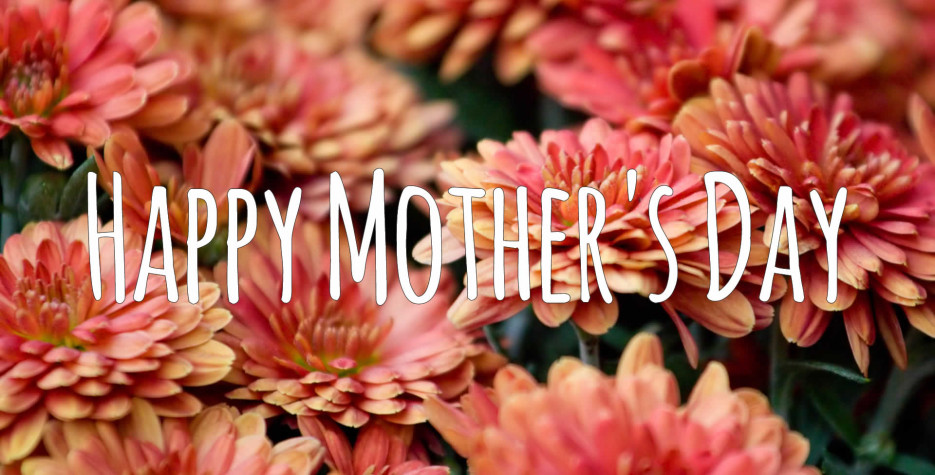Mother's Day in Australia
Australians celebrate Mother's Day on the second Sunday of May, giving flowers and postcards to their mothers.
The popularity of Mother's Day in Australia can be traced back to Mrs Janet Heyden. In 1924, Mrs Heyden was concerned over lonely, forgotten aged mothers in Sydney's Newington State Hospital, where she visited an old friend regularly. She started a campaign throughout the city for donations to buy presents for the ladies. Newspapers carried her appeals, while she made personal requests to many of Sydney's leading businesses. The response was incredible with donations ranging from talcum powder and soap to scarves and mittens, as well as confectionery and fruit gifts.
Mrs Heyden continued to visit the lonely and forgotten mothers in Newington right up until her death in 1960. Rather like Anne Jarvis, who popularised Mother's Day in America (read below), Mrs Heyden's daughter spoke of her mother’s disappointment at the commercialism of Mother’s Day and the loss of its original meaning.
About Mother's Day
Not a public holiday, but a legal national holiday observed on the second Sunday in May in the United States.
Mother's Day is celebrated across the world, in more than 50 countries, though not all countries celebrate it on the same day.
Countries that celebrate Mother's Day on the second Sunday of May include Australia, Denmark, Finland, Italy, Switzerland, Turkey and Belgium. In Mexico and many parts of Latin America, Mother's Day is celebrated on May 10th of each year. In Thailand, it is celebrated on August 12th, the birthday of the current Queen.
Early History
Arguably, the tradition of a day to celebrate mothers can be traced back to the times of the ancient Greeks, who held festivities to honour Rhea, the mother of the gods.
Early Christians celebrated the fourth Sunday of Lent as a mother's festival to honour Mary, the mother of Christ.
In the UK, the tradition of Mother's Day is now very similar to its American counterpart, but its origins are different, as the day commemorates returning to your mother church on the fourth Sunday in Lent.
The English colonists who settled in America discontinued the tradition of Mothering Sunday, as presumably, it would have been a bit of a trip to return to their mother church for the day.
The American tradition
For a holiday, that became popular in fairly recent times, we can still manage to find three originations for the day.
A true American Mother's Day was first suggested in the United States by Julia Ward Howe, writer of the Battle Hymn of the Republic. She suggested that the day be dedicated to peace. Starting in 1872, she organized Mother's Day meetings in Boston every year.
However, some would argue that Mother's day on the current date was almost accidentally set in motion by Mrs Juliet Calhoun Blakely. On Sunday 11 May 1877, Mrs Blakely's birthday, her son who was the pastor of her Church, left the pulpit abruptly. Mrs Blakely then stepped to the pulpit and took over the rest of the service, calling for other mothers to join her.
Mrs. Blakely's two sons felt so moved by their mother's actions that they vowed to return to their hometown of Albion, Michigan., every year to mark their mother's birthday. In addition, the brothers urged others to honour their own mothers on the second Sunday of May.
In terms of the holiday gaining its national status, undoubtedly the main driver was a Philadelphia schoolteacher called Anna M. Jarvis.
In 1907, Miss Anna, began a movement to set up a national Mother's Day in honor of her mother. Anna's mother, Mrs Anna M. Jarvis, had been instrumental in developing "Mothers Friendship Day" which was set up to assist in the healing process after the Civil War. Miss Jarvis wanted to set aside a day to honour all mothers, living and dead.
Miss Jarvis and her supporters began to write to ministers, evangelists, businessmen, and politicians in their crusade to establish a national Mother's Day.
The first Mother's Day observance was a church service favourite the second anniversary of her mother's death, the second Sunday of May. Anna handed out her mother's favourite flowers, white incarnations.
The following year, Mother's Day was also celebrated in Miss Anna's own city of Philadelphia. By 1911, Mother's Day had spread nationwide and was being celebrated in almost every state in the Union.
In 1914, President Woodrow Wilson proclaimed the second Sunday in May as a national holiday in honour of mothers.
Over the years, Mother's day became increasingly popular and the current traditions of card and gift-giving increased. It is said that the commercialization of Mother's day angered Anna as she felt that the original sentiment of the day was being sacrificed at the expense of greed and profit.
Mother's Day is now one of the most commercially successful U.S. occasions. According to the National Restaurant Association, Mother's Day is now the most popular day of the year to dine out at a restaurant in the United States. This year, consumers are expected to spend $21.2 billion on Mother's Day, an increase of 5 percent from last year, according to a survey by the National Retail Federation.
The Greeting Card Association estimates that more than 150 million Mother’s Day cards are exchanged in the U.S. every year, making Mother’s Day the third-largest card-sending holiday after Christmas and Valentine’s Day.
Traditions of Mother's Day in Australia
Traditionally, the chrysanthemum is given to mothers for Mother's Day as the flower is naturally in season during May, which is autumn in Australia. Men will often wear a chrysanthemum in their lapels in honour of mothers.
There is also a tradition to wear carnations on this day - a coloured carnation means that the mother is full of life, and a white carnation indicates the memory of deceased mothers.


